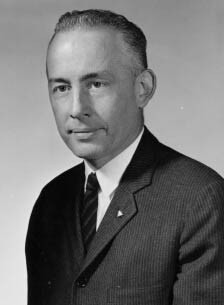-
(b.) -1919(d.)2001 June 08
Bio/Description
He received his B.S. degree in electrical engineering from the Massachusetts Institute of Technology in 1941. He stayed on at MIT, working in the Radiation Laboratory for three years and then moved to Sylvania Electric Products where was responsible for the design and construction of radar sets and other military equipment. His group built the arithmetic element for the Whirlwind I computer at MIT. In 1948, he moved to IBM where he designed the IBM 701, the first general purpose, mass produced computer. He wrote the first symbolic assembler, which allowed programs to be written in short, readable commands rather than pure numbers or punch codes. He became the chief engineer of IBM's 700 series of computers. In 1955, he led a group organized by IBM to study pattern recognition, information theory and switching circuit theory. Among other projects, the group simulated the behavior of abstract neural networks on an IBM 704 computer. That summer he and Claude Shannon were approached by a young Dartmouth College mathematician, John McCarthy, who was also working at IBM and Marvin Minsky who had begun to talk seriously about the idea of intelligent machines. They proposed a conference on the subject and with the support of the two senior scientists; they secured $7,000.00 from the Rockefeller Foundation to fund a conference in the summer of 1956. The meeting, now known as the Dartmouth Conference, is widely considered the "birth of artificial intelligence." He continued to supervise artificial intelligence projects at IBM, including Arthur Samuel's checkers program, Herbert Gelernter's Geometry Theorem Prover and Alex Bernstein's chess program. In 1958, he was a visiting professor at MIT, where he helped McCarthy with the development of Lisp programming language. The artificial intelligence programs developed at IBM began to generate a great deal of publicity and were featured in articles in both Scientific American and The New York Times. IBM shareholders began to pressure Thomas J. Watson, the president of IBM, to explain why research dollars were being used for such "frivolous matters." In addition, IBM's marketing people had begun to notice that customers were frightened of the idea of "electronic brains" and "thinking machines". An internal report prepared around 1960 recommended that IBM end broad support for AI and so the company ended its AI program and began to aggressively spread the message that "computers can only do what they were told." In the 1960s, he continued to work at IBM, directing cutting edge research in cryogenics and tunnel diode circuits. Later he joined IBM's Data Systems Division and developed programming languages and advanced computer science.
-
Date of Birth:
1919 -
Date of Death:
2001 June 08 -
Gender:
Male -
Noted For:
Designer of the IBM 701, the first general purpose, mass produced computer; writer of the first assembler and participator in the founding of the field of artificial intelligence -
Category of Achievement:
-
More Info:


